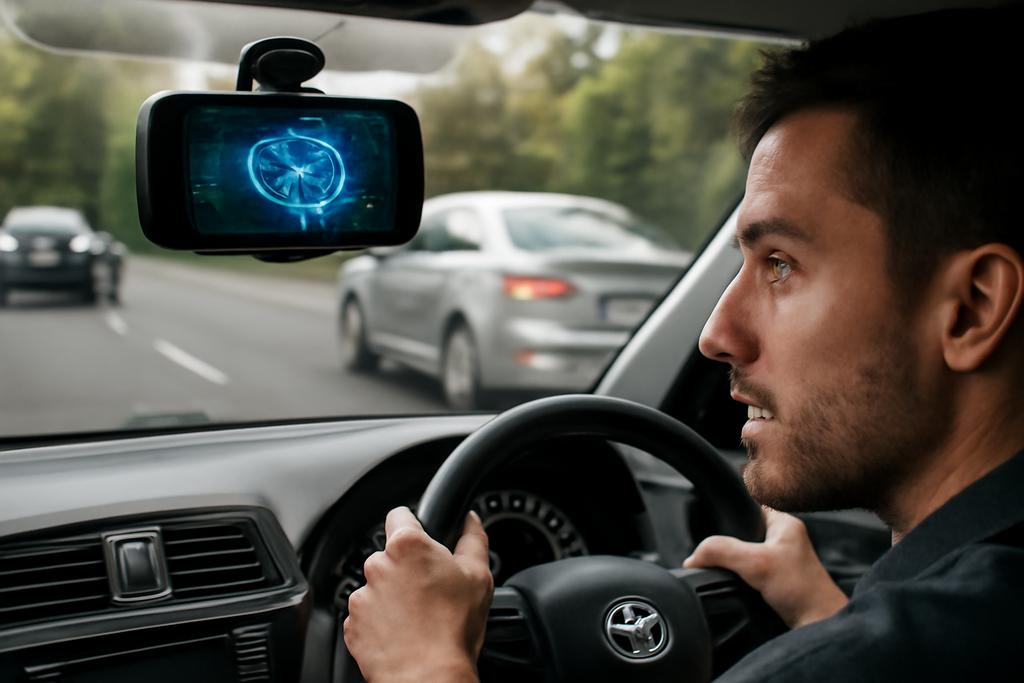Decoding the Driving Mind: AI’s New Challenge
Imagine a world where self-driving cars don’t just react to traffic, but anticipate your moves, understand your intentions, and even know when you’re distracted or stressed. It’s a vision fueled by the quest to build safer and more intuitive vehicles. This future requires something profound: machines that can truly understand human behavior, not just in predictable situations, but in the messy, unpredictable reality of driving.
Researchers at the University of California San Diego, along with colleagues at Toyota Motor North America, have taken a significant step toward this ambitious goal. Their work, spearheaded by Junda Wu, Jessica Echterhoff, and Julian McAuley, centers around a new benchmark dataset, PDB-Eval, designed to evaluate how well artificial intelligence can interpret the complex interplay of driver actions, intentions, and external factors.
Beyond Simple Recognition: The Need for Explanation
Current AI systems used in driver-assistance technologies are often proficient at recognizing basic actions, like lane changes or braking. But this isn’t enough for truly autonomous vehicles. We need AI that can not only see what’s happening but also understand *why* it’s happening. PDB-Eval pushes AI to a new level of comprehension, demanding the ability to provide detailed explanations for observed driver behavior.
Think of it like this: existing AI might recognize a driver slamming on the brakes. But PDB-Eval wants the AI to explain *why*: Was it a sudden stop due to an unexpected pedestrian, a car cutting them off, or a simple mistake? This deeper level of understanding is crucial for building systems that can react intelligently and safely in a vast array of situations.
Two Sides of the Same Coin: Internal and External Views
The brilliance of PDB-Eval lies in its dual-view approach. It doesn’t just rely on external camera footage of the road; it also integrates data from an in-cabin camera, capturing the driver’s actions and expressions. This integrated perspective allows the AI to correlate a driver’s internal state (e.g., looking in the rearview mirror) with external events (e.g., a car changing lanes).
This is important because human behavior is rarely straightforward. A driver’s actions aren’t always obvious; a simple head turn could indicate distraction or a deliberate check for oncoming traffic. PDB-Eval challenges AI to connect the dots between these internal and external cues, providing a much richer and more complete understanding of the driver’s behavior.
Teaching AI to Read Between the Lines: The PDB-QA Challenge
PDB-Eval isn’t just about generating simple descriptions. It includes a challenging question-answering task, PDB-QA, that pushes AI to demonstrate its understanding of driver behavior and the rationale behind those actions. Researchers aren’t just asking the AI to identify what the driver is doing; they’re asking it to explain *why* the driver did it, based on the available visual evidence.
Think of it as a sophisticated test of comprehension. If you were to read a short story and then be quizzed on the motivations of the characters, you wouldn’t just summarize the plot; you’d need to analyze the details and infer intentions. Similarly, PDB-QA expects AI to analyze the visual data and provide nuanced and evidence-based answers.
The Results: A Promising Step, But Challenges Remain
The researchers tested various large multimodal language models (MLLMs) on PDB-Eval. They found that while fine-tuning these models on the dataset significantly improved their performance, they still struggled with fine-grained analysis and complex temporal reasoning. This highlights the inherent challenges in teaching machines to understand subtle nuances of human behavior. The researchers found improvements of up to 73.2% in some tasks after fine-tuning, but also noted room for improvement.
Even with these improvements, the AI’s performance isn’t perfect. The models still make mistakes, demonstrating that building truly robust and reliable systems that understand human behavior in a driving context remains a significant hurdle.
The Future of Driverless Cars: Beyond the Code
The work on PDB-Eval is more than just an academic exercise; it’s a crucial step toward realizing the full potential of self-driving technology. It underscores the importance of moving beyond simple pattern recognition toward a deeper understanding of human behavior in complex scenarios. Successfully achieving this represents a significant step toward developing autonomous systems that are not only safe but also intuitive and trusted.
As AI systems continue to evolve, PDB-Eval offers a valuable benchmark, pushing researchers to tackle the more nuanced challenges of understanding human actions and motivations in the dynamic environment of the road. The future of driverless cars isn’t just about perfect code; it’s about understanding the human element – the intentions, reactions, and occasional uncertainties that make driving such a complex and dynamic endeavor.










